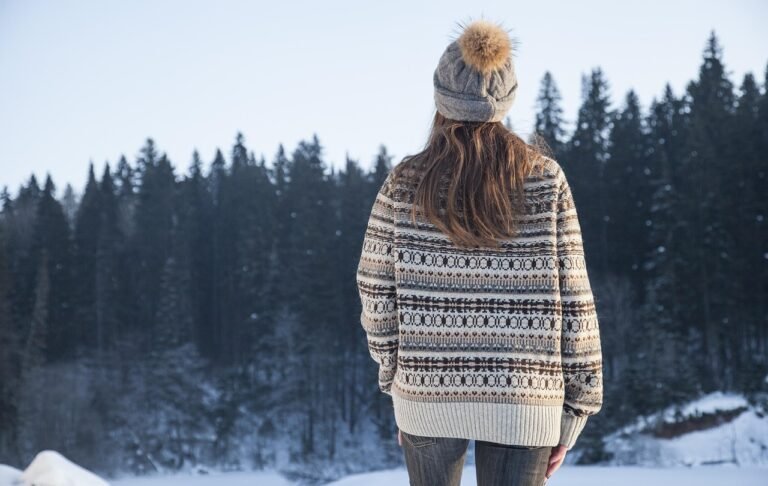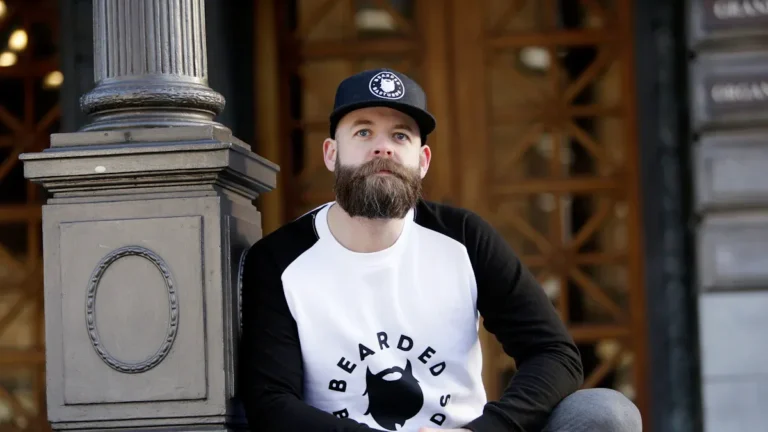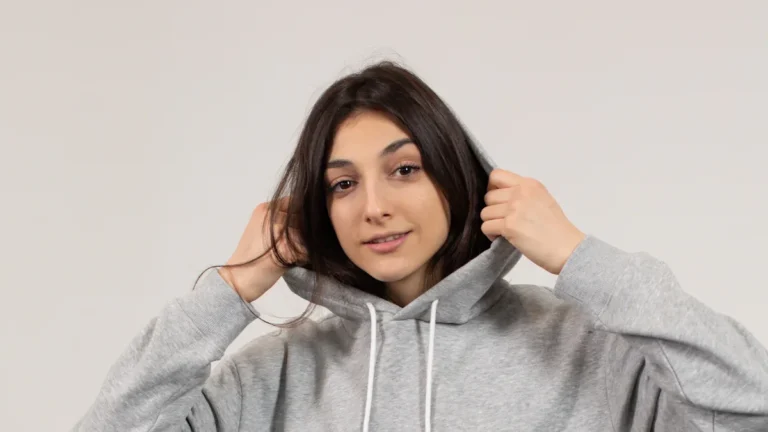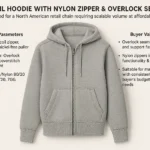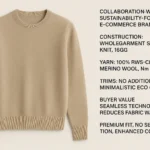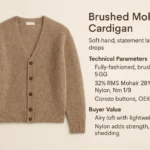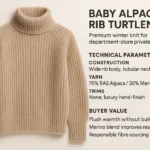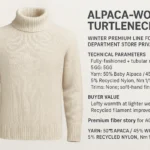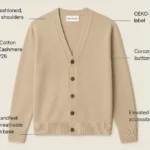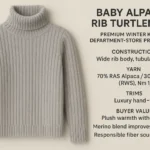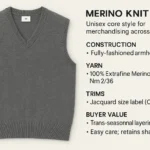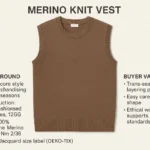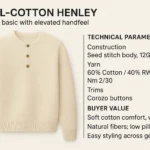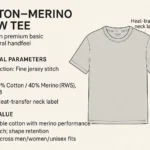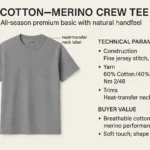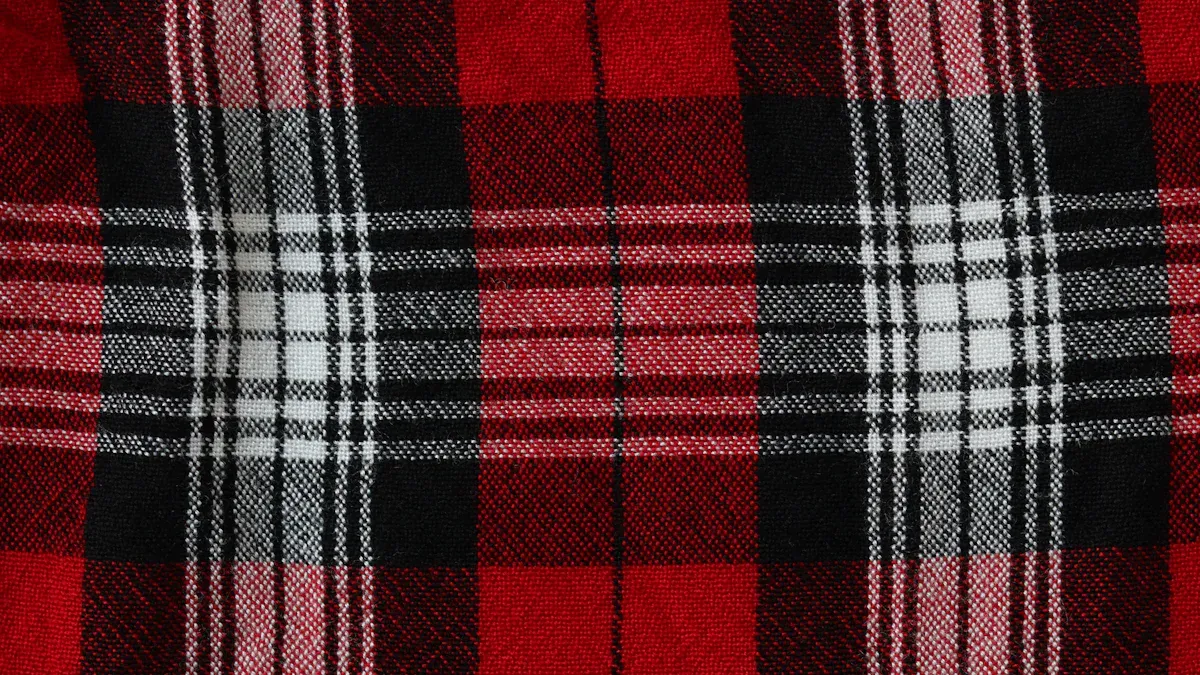
Flannel Fabric feels soft, warm, and cozy. It is made from cotton, wool, or synthetic fibers. This fabric is special because it is gentle on your skin. It keeps you warm and lasts a long time. You can use flannel in many ways. You might wear a flannel shirt. You might sleep on flannel sheets.
Application Type | Description |
|---|---|
Clothing | Flannel is used in shirts, pajamas, and jackets. People like it because it is casual and comfortable. |
Home Textiles | Flannel is common in bedding and home décor. Sheets and blankets made from flannel feel cozy and nice. |
Key Takeaways
Flannel fabric feels soft and warm. It is cozy and nice to touch. People use it for clothes and home items. Sheets and blankets are often made from flannel.
Flannel started in Wales in the 1600s. People there used local wool to make it. Now, flannel is popular all over the world.
Today, flannel is made from many materials. These include cotton, wool, and synthetic fibers. Each type has its own good points. Some keep you warm. Others let air pass through easily.
Flannel is simple to take care of. Washing it gently keeps it soft. Gentle washing also stops it from shrinking.
More people want flannel now. The market is getting bigger. People like flannel because it is comfy and eco-friendly. It works well in every season.
Flannel Fabric History

Origins
Flannel Fabric started in Wales in the 1600s. Workers used wool from local sheep to make it. They brushed the wool and spun it into yarn. Then, they made the fabric soft by napping the surface. Towns like Newtown and Llanidloes became famous for weaving flannel. Farmers and workers liked flannel because it kept them warm. It was comfortable for long days outside.
Evidence | Description |
|---|---|
17th Century Development | Flannel began in Wales in the 1600s. This marks its start there. |
Use of Leftover Wool | Welsh workers used extra wool from sheep to make flannel. Wool was easy to find in Wales. |
Popularity Among Farmers | Welsh farmers and workers liked flannel. It was useful for their jobs and daily life. |
Flannel was made with worsted yarns and napped for softness.
Carding wool helped get it ready for spinning. Machines did this in the 1800s.
Weaving happened in towns like Newtown and Llanidloes. This made flannel important in the area.
Evolution Through the Ages
In the 1800s, flannel spread to Europe and North America. Pioneers and outdoor workers wore flannel for warmth and strength. The Industrial Revolution helped flannel reach more people. Scottish mills made plaid patterns that became trendy. By the 1950s, flannel was part of everyday fashion. Brands like Pendleton and L.L. Bean made flannel shirts popular. In the 1990s, flannel was worn by musicians and young people in the grunge movement. They wanted to look different from regular fashion.
Outdoor workers liked flannel for warmth and toughness.
Scottish mills added plaid, making flannel stylish.
Flannel shirts were popular in the 1950s and 1960s.
The grunge movement in the 1990s made flannel cool.
Modern Use & Popularity
Today, flannel is used in clothes and home items. The flannel market was worth about $19.2 billion in 2023. It may grow to $29.8 billion by 2032. People want eco-friendly materials and old-fashioned styles. This keeps flannel popular. The Asia-Pacific region is growing fast. More people live in cities and earn more money. Makers use green fibers and mix cotton with new materials. This makes flannel stronger and easier to clean. Flannel is used for shirts, pajamas, bedding, car products, and safety gear.
Trend/Innovation | Description |
|---|---|
Sustainability | Makers use eco-friendly fibers and get materials in better ways. |
Diverse Applications | Flannel is found in bedding, cars, and safety gear. This shows it can be used for many things. |
Technological Advancements | Mixing cotton with new fibers makes flannel last longer and easier to care for. |
Flannel pajamas and shirts get more popular in fall and winter. People search for flannel most in December. This shows they want to stay warm and cozy when it is cold.
Composition & Structure
Materials & Fiber Choices
Flannel fabric can be made from many fibers. Long ago, people used wool because it was easy to get. Wool kept them warm in cold weather. Now, flannel is made from cotton, wool, or synthetic fibers like polyester and nylon. Each fiber makes flannel feel different and work in its own way.
Primary Material(s) | |
|---|---|
Traditional Flannel | Wool (historically common in Europe) |
Modern Flannel | Cotton (popular during Colonial times) |
Synthetic Flannel | Synthetic fibers (e.g., polyester, nylon) |
The fiber you pick changes how flannel feels and works. Wool keeps you warm and blocks cold air. Cotton is soft and lets your skin breathe. Synthetic fibers make flannel strong and help it dry fast. Some flannel blends use more than one fiber for better features.
Performance | Feel | |
|---|---|---|
Wool | Warmth, insulation | Soft, comfortable |
Cotton | Breathable, soft | Very soft against the skin |
Synthetics | Durable, moisture-wicking | Varies, often less soft than natural fibers |
Note: Wool flannel is best for the environment. Cotton flannel is better than synthetic types. Synthetic flannel is the worst for pollution.
Environmental Impact | |
|---|---|
Wool | Least polluting |
Cotton | Less polluting than synthetic textiles |
Synthetic | More polluting |
Weave Construction
You can tell flannel by its weave style. Most flannel uses plain or twill weave. In a plain weave, threads cross over and under in a simple way. This makes flannel strong and even. Twill weave has a diagonal pattern. It makes flannel bend easily and feel soft.
Plain weave flannel is smooth and tough.
Twill weave flannel is softer and bends more.
The weave you choose changes how flannel looks and feels. Twill weave is good for clothes. Plain weave works well for sheets and home items.
Brushed or Napped Finish
Flannel feels soft and fuzzy because of a special finish. This finish comes from brushing or napping. Here is how it works:
Weaving: Yarn is woven in plain or twill patterns.
Brushing: Machines gently brush the surface. This lifts the fibers and makes a fuzzy nap.
Finishing: Treatments like shrinking or softening make flannel better to use.
This process gives flannel its famous warmth and softness. You get these benefits:
Wicks away moisture
Works for many things
Tip: The brushed finish helps flannel trap air and keep you warm. Flannel is great for shirts, pajamas, and bedding because of this finish.
Flannel Fabric Properties
Softness
You will notice the softness of flannel fabric as soon as you touch it. The brushing process lifts the fibers, giving the surface a fluffy and cozy feel. This makes flannel softer than regular cotton and even brushed cotton. Many people choose flannel for pajamas, shirts, and bedding because it feels gentle against the skin. The nap, or raised surface, adds extra comfort and warmth.
Fabric | Softness Description |
|---|---|
Flannel | Renowned for its exceptional softness and cozy feel. |
Brushed Cotton | Also soft, but flannel has a thicker, more plush feel. |
Fleece | Smooth and somewhat similar to velvet, but less textured. |
You can measure softness in a lab using special tools. For example, the Wool Comfort Meter checks how the fabric feels on your skin. The Softness Tester gives a score from 0 (hard) to 10 (soft). These tests help show why flannel is a favorite for comfort.
Flannel fabric stands out for its soft, warm texture, making it a top choice for anyone who values comfort.
Warmth
Flannel fabric keeps you warm by trapping heat close to your body. The raised fibers create tiny air pockets that hold warmth. This makes flannel perfect for cold nights or chilly mornings. You can use flannel sheets in winter or wear a flannel shirt when you need extra warmth.
Fabric Type | Insulation Properties | Breathability |
|---|---|---|
Flannel | Excellent heat trapping due to raised fibers | Good, allows temperature regulation |
Fleece | High warmth-to-weight ratio | Moderate, less breathable than flannel |
Flannel traps heat close to your body.
It works well in cold climates and keeps you comfortable.
The fabric still lets air move, so you do not get too hot.
Flannel fabric adapts to changing temperatures. You stay warm when it is cool, but you do not overheat when it gets warmer. This makes flannel a smart choice for places with different weather.
Breathability
You will find that flannel fabric lets your skin breathe. Natural fibers like cotton and wool allow air to move through the fabric. This helps you stay comfortable in many climates. Cotton flannel is especially good at letting air flow, so you do not feel stifled.
Cotton and wool flannel breathe better than synthetic flannel.
A looser weave increases airflow and comfort.
Lighter flannel feels cooler, while heavier flannel gives more warmth.
Wool flannel wicks moisture and helps control your body temperature.
You can use flannel in both cool and mild weather. Some people prefer lighter flannel for spring and fall, while others choose heavier flannel for winter. Your comfort may depend on your personal preference and the season.
Durability
Flannel fabric can last a long time if you care for it properly. The weave, quality of materials, and fabric weight all affect how well it holds up. Heavier flannel, usually over 6.5 ounces per square yard, is stronger and resists wear better.
Factor | Description |
|---|---|
Weave | Flannel can have a loose weave, which may stretch and shrink over time. Pre-washing is crucial. |
Quality of Materials | High-quality materials are essential for durability; lower quality may lead to quicker wear. |
Weight of Fabric | Medium-quality flannel weighs at least 5 oz./sq yd; higher quality is over 6.5 oz./sq yd. |
Pre-wash flannel before sewing to allow for any shrinkage.
Wash flannel in warm water and dry on low heat to keep it strong.
Air drying helps prevent pilling and keeps the fabric soft.
Use starch spray if you want to control stretching.
You can machine wash cotton flannel on a gentle cycle and tumble dry on low. Wool flannel needs hand washing or dry cleaning. Always check the care label for the best results. Flannel fabric stands up to regular use, but proper care helps it last even longer.
Uses & Applications
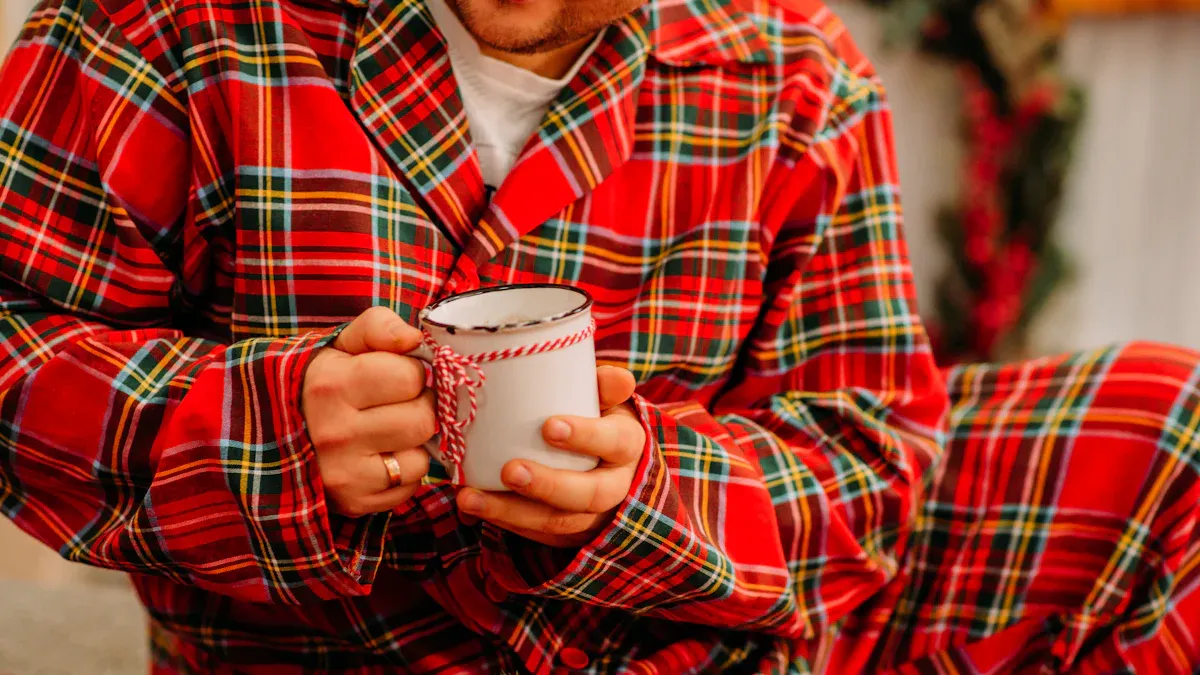
Clothing & Fashion
Flannel fabric is used in lots of clothes. Flannel shirts are soft and keep you warm. Many people wear flannel bathrobes and loungewear at home. These clothes are comfy and cozy. More people want these clothes since the pandemic. People like to wear relaxed clothes now.
Type of Clothing | Market Share Description |
|---|---|
Bathrobes | Bathrobes made from flannel are more popular now. |
Loungewear | Loungewear sales grew because people want to relax. |
Home Textiles | Most flannel is used for things like blankets and sheets. |
Tip: Wash flannel shirts in cold water. Dry them on low heat to keep them soft and stop shrinking.
Home Goods
Flannel is great for bedding, blankets, and pillowcases. Flannel sheets keep your bed warm at night. The fabric feels soft and nice. Flannel bedding lasts a long time. It comes in many colors and patterns. Flannel is easy to wash and good for people with allergies.
Feels very soft and cozy
Lasts a long time
Comes in many designs
Easy to wash and care for
Good for people with allergies
Good for layering on beds
Works for all sleeping styles
Some flannel is eco-friendly
Industrial & Specialty Uses
Flannel is not just for clothes or beds. It is used for packaging and cleaning cloths. Flannel is also used in stuffed toys. Some companies use flannel for jewelry boxes and silver storage. Flannel helps protect and keep things clean.
Application Type | Specific Uses |
|---|---|
Packaging Material | Used for pads, lining, and gift pouches. |
Polishing Cloth | Used for cleaning and shining things. |
Stuffed Toys | Used to make plush animals and toys. |
Silver Storage | Used to keep silver safe and clean. |
Pros And Cons of Flannel
Flannel fabric has many good points but some bad ones too.
Advantages | Disadvantages |
|---|---|
Too hot for summer. | |
Soft: Feels smooth and plush. | Can wrinkle easily. |
Breathable: Lets air move through. | Might shrink if washed wrong. |
Strong: Does not pill or fray easily. | Good flannel can cost more. |
Easy to care for: Gets softer after washing. |
Note: Always read the care label. This helps stop shrinking and wrinkling.
Comparison with Other Fabrics
You may wonder how flannel is different from cotton, fleece, or wool. Flannel is warm and lets your skin breathe. Cotton is lighter and good for hot days. Fleece is warm but does not breathe well. Wool is heavy and can feel scratchy. Flannel needs gentle washing. Fleece is easy to wash and dries fast.
Fabric | Warmth | Breathability | Maintenance |
|---|---|---|---|
Flannel | Breathes better than fleece, good for layers. | Needs gentle care, can shrink. | |
Cotton | Light and smooth, best for warm weather. | Breathes well. | Easy to wash and care for. |
Fleece | Very warm and water-resistant. | Does not let air move well. | Easy to wash, dries quickly. |
Wool | Heavy and keeps you warm. | Can feel rough or itchy. | Needs more care than fleece. |
Tip: Pick flannel for warmth and comfort. Wash it gently to keep it nice.
Buying & Quality Guide
Selecting the Right Flannel
When you shop for flannel, you want to pick the best fabric for your needs. You should think about how you plan to use it. Flannel comes in different weights, so you can choose medium or heavy fabric. A heavier flannel works well for winter bedding or jackets. A lighter flannel feels better for shirts or pajamas. You should check the weave tightness. A tight weave lasts longer and feels smoother. Softness matters most for items that touch your skin, like blankets or sleepwear.
Criteria | Description |
|---|---|
Weight | Choose the appropriate weight for your project, as flannel ranges from medium to heavy. |
Weave Tightness | Consider the tightness of the weave, as a looser weave may be more fragile. |
Softness | Look for softness, especially for items like pajamas and blankets. |
Intended Use | Determine the intended use, whether for clothing or home decor. |
Tip: Always match the flannel’s weight and softness to your project. You will get better comfort and durability.
Quality Indicators
You can spot high-quality flannel by checking a few key features. Look for fabric weight around 8 ounces per square yard. This means the fabric will last longer. Double brushed flannel feels extra soft on both sides. You should check the stitching and construction. Neat stitches and strong buttonholes show good craftsmanship.
Fabric Weight: Pick flannel with a weight near 8oz/sq yard for strength.
Double Brushed Softness: Choose flannel brushed on both sides for a plush feel.
Stitching and Construction: Look for even stitches and reinforced buttonholes.
You should also check the fabric composition. Pure cotton breathes well, while polyester blends add strength. A tight weave and higher thread count (over 150 GSM) help flannel stay soft and last longer.
Cost vs. Value
Flannel prices can change based on quality and source. You may find fabric for as little as $5.25 per yard, or pay up to $14.80 per yard for premium options.
Fabric Source | Price per Yard |
|---|---|
Fabric Design Treasures | $5.25 |
Fabric Design Treasures | $9.25 |
Stonemountain Fabric | $14.80 |
Stonemountain Fabric | $14.20 |

You may pay more for top brands, but you get better long-term value. For example, L.L.Bean Ultrasoft Comfort Flannel Sheet Sets cost a moderate amount and stay soft for many seasons. The Premium Supima Flannel Sheet Collection costs more, but you get thicker fabric and less shrinkage.
Product Name | Price | Long-term Value | Quality Attributes |
|---|---|---|---|
Moderate | High | Softness over many seasons, made with Portuguese flannel | |
L.L.Bean Premium Supima Flannel Sheet Collection | High | Very High | Thicker fabric, minimal shrinkage and pilling, long-term softness |
If you invest in quality flannel, you enjoy comfort and durability for years. You save money over time because you do not need to replace it often.
You have learned that flannel fabric stands out for its comfort, warmth, and versatility. Many people choose flannel for clothing and home goods because it feels soft and lasts a long time.
Flannel works well for shirts, pajamas, and bedding.
You can find eco-friendly flannel options.
Use lighter flannel in summer and thicker flannel in winter.
Gentle washing helps keep flannel soft.
The flannel market keeps growing because you want textiles that feel good and last. New fabric technology and eco-friendly choices make flannel a smart pick for any season.
FAQ
What makes flannel fabric different from regular cotton?
You will notice that flannel feels much softer than regular cotton. The brushing process lifts the fibers, which gives flannel its fuzzy texture. This makes flannel warmer and cozier than plain cotton.
Can you use flannel fabric all year round?
You can use lightweight flannel in spring and fall. Heavy flannel works best in winter. Flannel may feel too warm for summer, but you can choose lighter options for comfort.
How do you keep flannel from shrinking?
You should wash flannel in cold or warm water. Use a gentle cycle. Dry on low heat or air dry. Always check the care label. This helps you keep your flannel soft and the right size.
Is flannel fabric good for people with allergies?
You can choose cotton flannel if you have sensitive skin or allergies. Cotton flannel resists dust mites and feels gentle. Synthetic flannel may not work as well for allergies.
What are the best uses for flannel fabric?
You can use flannel for shirts, pajamas, and bedding. Flannel also works well for blankets, pillowcases, and even cleaning cloths. Its softness and warmth make it a favorite for many home and clothing items.




